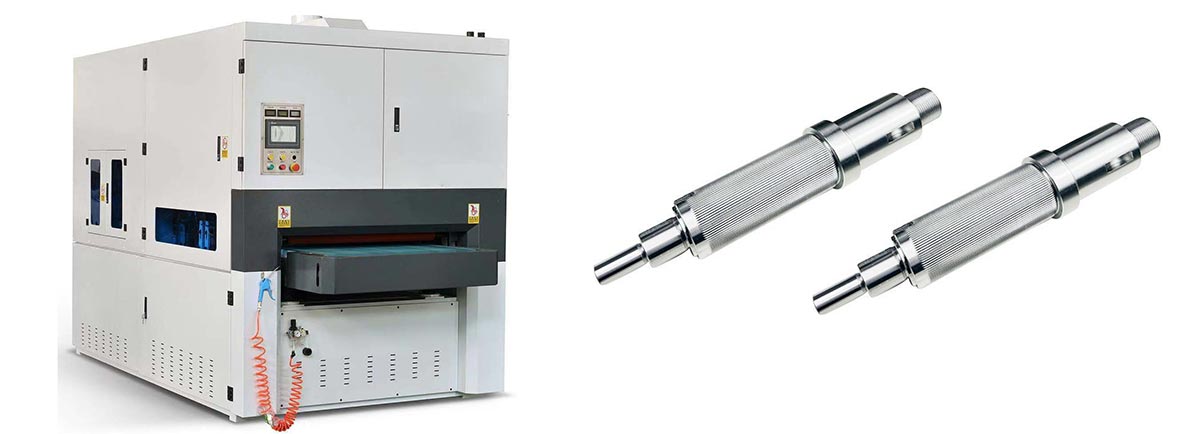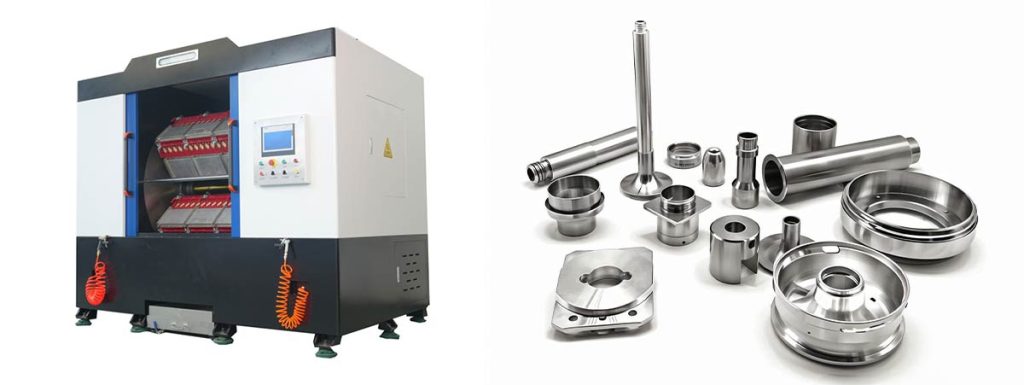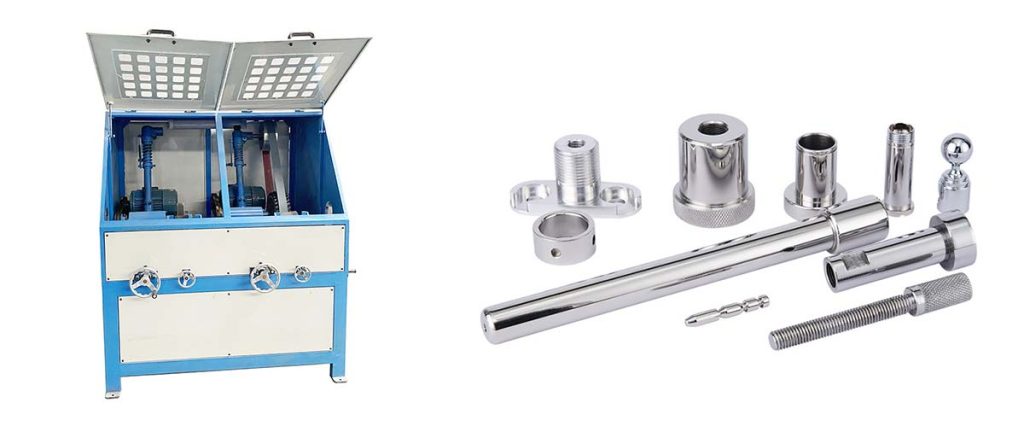

Energy consumption is a critical factor in the efficiency and cost-effectiveness of metal polishers. Understanding how energy is utilized enables businesses to identify inefficiencies that might otherwise remain hidden. For example, automated systems in metal polisher processes leverage real-time data to optimize machine performance, leading to significant reductions in energy usage. This strategy not only lowers electricity expenses but also improves overall operational efficiency. By pinpointing these inefficiencies, companies can adopt targeted energy-saving measures, promoting sustainable practices and achieving long-term financial advantages.
Key Takeaways
- Knowing how energy is used shows waste in metal polishing.
- Using new, energy-saving machines cuts energy use and saves money.
- Energy systems track use live, finding and fixing waste fast.
- Keeping machines in good shape uses less energy and lasts longer.
- Matching work times with energy needs stops waste and saves money.
Understanding Energy Consumption in Metal Polishers
Key Factors Influencing Energy Consumption
Equipment Type and Specifications
The type of equipment used in metal polishing significantly impacts energy consumption. Machines with outdated designs often lack energy efficiency features, leading to higher energy use by equipment. Modern machines, on the other hand, incorporate advanced technologies that enhance energy efficiency performance. Specifications such as motor capacity, speed settings, and power ratings also determine how much energy is consumed during operations. Selecting equipment tailored to specific tasks can lead to substantial energy conservation.
Operational Hours and Workload
The duration and intensity of machine operation directly affect energy consumption. Machines running for extended hours or handling heavy workloads tend to consume more energy. Analyzing operational patterns helps identify opportunities for energy efficiency improvements. For instance, reducing unnecessary machine runtime or balancing workloads across shifts can lower energy use without compromising productivity.
Production Processes and Techniques
The processes and techniques employed in metal polishing services also play a crucial role in energy consumption. Inefficient methods often result in wasted energy and reduced output. Optimizing production processes, such as adopting automated systems or refining polishing techniques, can improve energy efficiency. These changes not only conserve energy but also enhance overall operational performance.
Patterns of Energy Use in Metal Polishing
Peak Energy Demand Periods
Energy consumption in metal polishing often peaks during specific periods, such as when multiple machines operate simultaneously. Identifying these peak demand periods through analysis enables businesses to implement energy conservation strategies. For example, staggering machine usage or scheduling high-energy tasks during off-peak hours can reduce overall energy demand.
Variations by Task Type
Different polishing tasks require varying levels of energy. Tasks involving heavy-duty polishing or intricate detailing typically consume more energy compared to simpler operations. Understanding these variations allows for better optimization of energy use. Tailoring energy input to the specific requirements of each task ensures efficient energy utilization and minimizes waste.
Methods for Analyzing Energy Consumption
Measuring Energy Use in Metal Polishers
Tools for Monitoring Energy Consumption
Accurate monitoring tools play a vital role in understanding energy consumption data. Devices like energy meters and data loggers help track real-time energy usage. These tools provide insights into how machines consume energy during different stages of the process. Advanced systems also allow users to collect and analyze energy consumption data over time, identifying trends and areas for energy conservation. By using these tools, businesses can make informed decisions to improve energy efficiency performance.
Metrics like Specific Energy Consumption (SEC) and Peak Demand
Metrics such as Specific Energy Consumption (SEC) and peak demand are essential for evaluating energy efficiency. SEC measures the energy required to remove a specific amount of material during polishing. Peak demand, on the other hand, identifies periods of maximum energy use. Tracking these metrics helps businesses optimize energy consumption and reduce costs.
Evaluating Energy Efficiency
Benchmarking Against Industry Standards

Benchmarking involves comparing a facility’s energy performance with industry standards. This analysis highlights whether a metal polisher operates efficiently or consumes excessive energy. Facilities that fall short of benchmarks can implement energy efficiency improvements to align with best practices. Regular benchmarking ensures continuous progress in energy conservation efforts.
Identifying High-Energy-Use Areas
Identifying areas with high energy consumption is crucial for energy efficiency improvement. Machines or processes that consume disproportionate amounts of energy often indicate inefficiencies. Targeting these areas for optimization can lead to significant energy conservation. For example, replacing outdated equipment or refining production techniques can reduce energy waste.
Conducting Energy Audits
Steps for Effective Energy Audits
An energy audit involves a systematic review of energy consumption data to identify inefficiencies. The process typically includes:
- Collecting detailed energy consumption data.
- Analyzing patterns and identifying peak demand periods.
- Evaluating equipment and processes for inefficiencies.
- Recommending actionable energy efficiency improvements.
Conducting audits regularly ensures that facilities maintain optimal energy efficiency performance.
Benefits of Regular Energy Reviews
Regular energy audits provide numerous benefits. They help businesses uncover hidden inefficiencies, reduce energy costs, and enhance overall energy performance. Additionally, audits support long-term sustainability goals by promoting energy conservation practices. Facilities that prioritize audits often achieve consistent improvements in operational efficiency.
Common Inefficiencies in Metal Polishers
Outdated Equipment and Technology
High Energy Use of Older Machines
Older machines often consume excessive energy due to inefficient designs and outdated components. These machines lack the advanced features found in modern equipment, making them energy-intensive. Their motors and systems operate at lower energy efficiency performance levels, leading to higher energy consumption during polishing tasks. Replacing such machines with newer models can significantly reduce energy use and improve overall energy efficiency.
Lack of Energy-Saving Features
Many older machines lack energy-saving features, such as variable speed controls or automated shut-off systems. These features play a crucial role in energy conservation by optimizing machine operations. Without them, machines may run at full capacity even when not required, wasting energy. Upgrading to equipment with built-in energy management systems can address this issue and support energy efficiency improvements.
Energy Loss and Waste Heat
Causes of Heat Loss in Metal Polishing
Heat loss occurs due to inefficient processes and poorly maintained equipment. Friction during polishing generates heat, which often escapes into the environment instead of being utilized. Inadequate insulation and improper machine settings further exacerbate this issue, making the process more energy-intensive. Regular maintenance and process optimization can help minimize heat loss.
Impact on Energy Efficiency
Heat loss directly impacts energy efficiency by increasing energy consumption. Machines must work harder to compensate for lost energy, leading to higher operational costs. Addressing heat loss through better insulation and improved processes can enhance energy efficiency performance and reduce waste.
Suboptimal Production Schedules
Energy Waste Due to Idle Time
Idle machines consume energy without contributing to production. Poorly planned schedules often result in machines running unnecessarily, increasing energy consumption. Implementing energy management systems can help monitor and control machine usage, reducing idle time and promoting energy conservation.
Inefficiencies in Batch Processing
Batch processing can be energy-intensive if not optimized. Large batches may require extended machine runtime, while small batches can lead to frequent starts and stops, wasting energy. Optimizing batch sizes and aligning production schedules with demand can improve energy efficiency and reduce waste.
Energy-Saving Improvement Measures for Metal Polishers
Upgrading to Energy-Efficient Equipment
Benefits of Modern Machines
Modern metal polishing machines offer significant advantages in energy conservation and operational efficiency. These machines consume less energy due to advanced designs and technologies, which directly reduces electricity costs. They also enhance energy efficiency performance by minimizing waste and optimizing polishing processes. Over time, businesses benefit from lower operational expenses and improved productivity. While the initial investment in energy-efficient equipment may be higher, the long-term savings and environmental benefits outweigh the upfront costs.
Key Features to Look For
When selecting energy-efficient equipment, businesses should prioritize specific features:
- Machines equipped with energy optimization systems.
- Waste reduction technologies, such as dust collection systems or recycling features.
- Compatibility with eco-friendly materials like biodegradable abrasives.
- Compliance with international environmental standards, such as ISO 14001 certifications.
These features not only improve energy efficiency but also contribute to sustainable manufacturing practices. By choosing machines with these attributes, businesses can achieve energy efficiency improvements while reducing their environmental impact.
Implementing Energy Management Systems
Real-Time Monitoring and Control
Energy management systems enable real-time monitoring of energy use, allowing businesses to identify inefficiencies quickly. These systems provide data-driven insights into energy consumption patterns, helping operators make informed decisions. For example, real-time control can prevent energy waste by shutting down idle machines or adjusting settings to match production requirements. This proactive approach ensures consistent energy conservation and operational efficiency.
Integration with Production Processes
Integrating energy management systems with production processes enhances coordination between different stages of manufacturing. This integration reduces holdup times and lowers energy consumption, resulting in estimated savings of 2 to 5 percent. Additionally, businesses can optimize energy use by leveraging technological upgrades and data insights. This approach not only improves energy efficiency but also supports sustainability goals and reduces operational costs.
Optimizing Production Schedules
Reducing Idle Time and Energy Waste
Idle machines consume energy without contributing to production, leading to unnecessary waste. Optimizing production schedules minimizes idle time by ensuring machines operate only when needed. Energy-driven scheduling systems can automatically adjust machine usage based on demand, further reducing energy waste. This strategy enhances energy conservation while maintaining productivity.
Aligning Energy Use with Demand
Aligning energy use with demand involves scheduling high-energy tasks during off-peak hours to avoid peak pricing. Advanced scheduling systems can dynamically adjust to electricity market fluctuations, optimizing both energy costs and production efficiency. By adopting these energy-saving measures, businesses can achieve significant savings and improve overall energy performance.
Regular Maintenance and Upkeep
Ensuring Equipment Operates Efficiently

Regular maintenance plays a vital role in ensuring metal polishers operate efficiently. Daily inspections help identify unusual noises or signs of wear that could indicate underlying issues. Cleaning air filters and maintaining proper ventilation prevent overheating, which can lead to energy inefficiency. Lubricating moving parts ensures smooth operation, reducing unnecessary energy consumption. Operators should also check the condition of polishing media and replace them when needed to maintain consistent performance. Inspecting electrical connections minimizes the risk of intermittent power loss, which can disrupt operations and waste energy.
A scheduled maintenance program further enhances energy conservation by ensuring regular checks are conducted. Following the manufacturer’s guidelines for maintenance and lubrication keeps machines in optimal condition. Detailed records of all maintenance activities allow operators to track the condition of equipment over time. These practices not only improve operational efficiency but also contribute to long-term energy conservation efforts.
Preventing Energy Loss Due to Wear and Tear
Wear and tear in metal polishing equipment can lead to significant energy loss if not addressed promptly. Regular maintenance ensures all components remain in good condition, enhancing operational efficiency. Proper lubrication reduces friction, which minimizes energy consumption during polishing tasks. Removing debris from machines prevents blockages that could force equipment to work harder, consuming more energy.
A systematic approach to maintenance helps identify potential issues before they escalate into major problems. For example, worn-out parts can be replaced early, preventing further damage and energy waste. These proactive measures support energy conservation by maintaining the efficiency of metal polishers. Businesses that prioritize regular upkeep benefit from reduced operational costs and improved sustainability.
Tip: Implementing a structured maintenance routine not only conserves energy but also extends the lifespan of equipment, maximizing return on investment.
Conclusion
Analyzing energy consumption in metal polishers reveals critical insights into operational inefficiencies and energy-saving opportunities. Specific energy consumption plays a vital role in evaluating machining processes, especially in energy-intensive tasks like grinding. Material properties, such as carbon content in steel, significantly influence energy use. For instance, tempering C45 steel reduces energy consumption, while quenching increases it. These findings highlight the importance of detailed analysis in identifying energy conservation strategies.
Businesses can take actionable steps to reduce energy use and costs. Automating metal polishing processes enhances energy efficiency by optimizing operations through real-time data. This approach not only lowers electricity expenses but also supports sustainable practices. Additionally, investing in energy-efficient technologies, such as modern machines with advanced features, ensures long-term cost savings and improved productivity.
Prioritizing energy-saving measures offers multiple benefits. Monitoring energy usage identifies inefficiencies, reducing energy bills and enhancing equipment performance. Lowering energy consumption minimizes carbon footprints, contributing to sustainability and environmental impact report goals. Real-time data optimization improves operational efficiency, reducing downtime and increasing productivity. By focusing on energy conservation, businesses can achieve sustainability while maintaining operational excellence.
Tip: An energy efficiency opportunities report can guide businesses in identifying areas for improvement and implementing sustainable solutions. Investing in energy-efficient equipment ensures both environmental and financial benefits.
